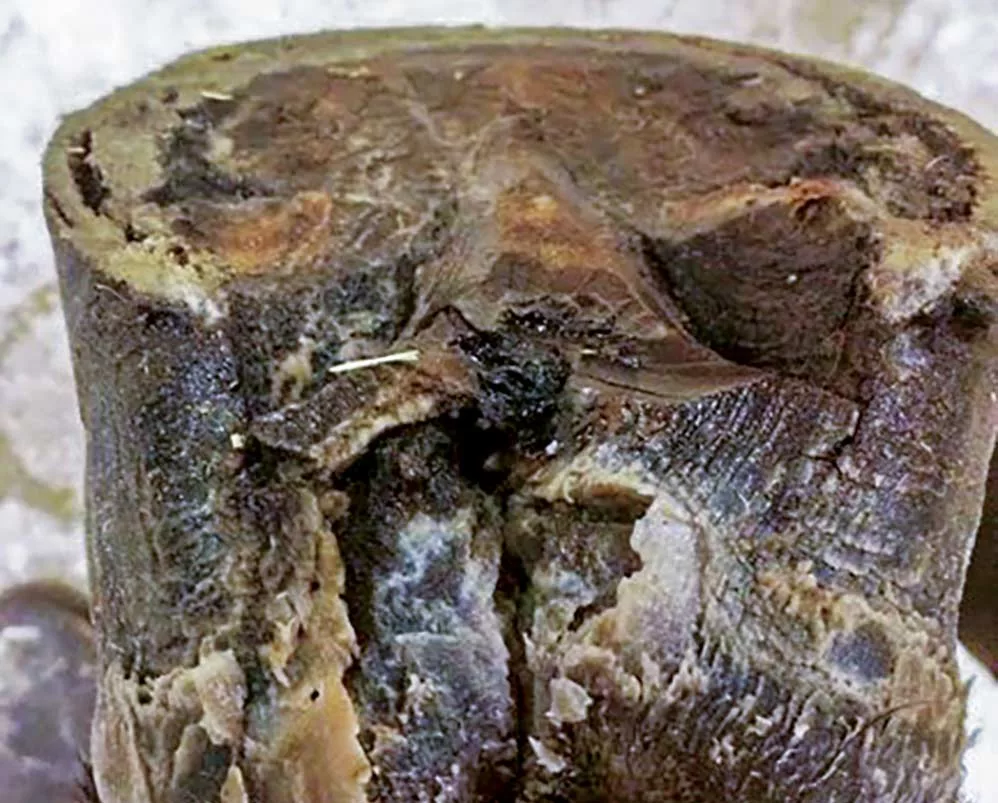American Farriers Journal
American Farriers Journal is the “hands-on” magazine for professional farriers, equine veterinarians and horse care product and service buyers.

Thrush is a degenerative condition of the central and lateral sulci of the frog generally caused by a bacterial infection. The disease begins when bacteria penetrate the outer horn or epidermis of the frog and is characterized by deterioration of the frog and the presence of black necrotic exudate with a foul odor.1,2,3 In severe cases, the bacteria can reach the dermis, the sensitive tissue beneath the frog, causing pain and lameness. Blood may be encountered when the frog is cleaned with a brush or on the end of the hoof pick during routine grooming.
Severe cases of thrush must be differentiated from canker, which is a proliferative disease where abnormal frog tissue increases in comparison to thrush, which is a degenerative disease where the horn of the frog deteriorates (Figures 1a & 1b).


Figure 1a is thrush. Note the deterioration of the frog and the recession below ground surface of the foot. Figure 1b is severe canker. Note the proliferation of the diseased horn.